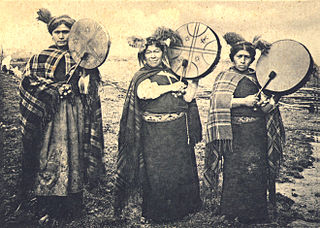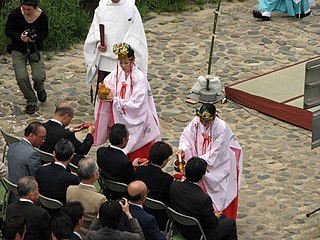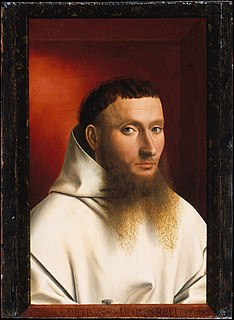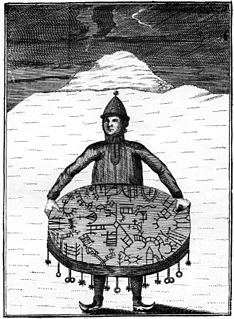 W
WThe Inuit angakkuq Inuvialuktun: angatkuq; Greenlandic: angakkoq, pl. angákut) is an intellectual and spiritual figure in Inuit culture who corresponds to a medicine man. Other cultures, including Alaska Natives, have traditionally had similar spiritual mediators, although the Alaska Native religion has many forms and variants.
 W
WBabaaláwo or Babalawo is a spiritual title that denotes a priest of the Ifá oracle. Ifá is a divination system that represents the teachings of the Òrìṣà Ọrunmila, the Òrìṣà of Wisdom, who in turn serves as the oracular representative of Olodumare. A Babalawo's female counterpart is known as an or Ìyánífá
 W
WIn Australia, celebrants are people who conduct formal ceremonies in the community, particularly weddings, which are the main ceremony of legal import conducted by celebrants. They may also conduct extra-legal ceremonies such as naming of babies, renewal of wedding vows and funerals. Officiating at a marriage requires that the celebrant be an authorised marriage celebrant under Australian law, but officiating at extra-legal ceremonies does not.
 W
WA chaplain is, traditionally, a cleric, or a lay representative of a religious tradition, attached to a secular institution such as a hospital, prison, military unit, intelligence agency, embassy, school, labor union, business, police department, fire department, university, sports club, or private chapel.
 W
WClergy are formal leaders within established religions. Their roles and functions vary in different religious traditions, but usually involve presiding over specific rituals and teaching their religion's doctrines and practices. Some of the terms used for individual clergy are clergyman, clergywoman, and churchman. Less common terms are cleric, churchwoman, and clergyperson, while clerk in holy orders has a long history but is rarely used.
 W
WA daoshi, translated as Taoist priest, Taoist monk, Taoist master or Professional Taoist, is a priest in Taoism. Along with Han Chinese priests, there are also many practicing ethnic minority priests in China. Some orders are monastic, while the majority are not.
 W
WA druid was a member of the high-ranking class in ancient Celtic cultures. Druids were religious leaders as well as legal authorities, adjudicators, lorekeepers, medical professionals and political advisors. Druids left no written accounts. While they were reported to have been literate, they are believed to have been prevented by doctrine from recording their knowledge in written form. Their beliefs and practices are attested in some detail by their contemporaries from other cultures, such as the Romans and the Greeks.
 W
WA hermit, or eremite, is a person who lives in seclusion. Hermits are a part of several sections of various religions and this concept has garnered significant attention and importance.
 W
WItako , also known as ichiko (市子) or ogamisama (オガミサマ), are blind women who train to become spiritual mediums in Japan. Training involves severe ascetic practices, after which the woman is said to be able to communicate with Japanese Shinto spirits, kami, and the spirits of the dead. Itako perform rituals tied to communication with the dead and divination. The practice has been on the decline, with only 20 living itako in Japan, all more than 40 years old.
 W
WA kannushi , also called shinshoku , is a person responsible for the maintenance of a Shinto shrine as well as for leading worship of a given kami. The characters for kannushi are sometimes also read as jinshu with the same meaning.
 W
WLay preacher is a preacher or a religious proclaimer who is not a formally ordained cleric. Lay preaching varies in importance between religions and their sects. Although Lay Preachers in many Christian denominations may be accorded titles such as Reverend as a courtesy by people - including those in their congregation - it is only once a priest, cleric, minister or reverend has been ordained that he/she can correctly adopt that title.
 W
WA machi is a traditional healer and religious leader in the Mapuche culture of Chile and Argentina. Machis play significant roles in Mapuche religion. In contemporary Mapuche culture, women are more commonly machis than men but it is not a rule.
 W
WIn Shinto, a miko (巫女) is a shrine maiden or a supplementary priestess. Miko were once likely seen as shamans but are understood in modern Japanese culture to be an institutionalized role in daily shrine life, trained to perform tasks, ranging from sacred cleansing to performing the sacred Kagura dance.
 W
WA military chaplain ministers to military personnel and, in most cases, their families and civilians working for the military. In some cases they will also work with local civilians within a military area of operations.
 W
WA missionary is a member of a religious group sent into an area to promote their faith or perform ministries of service, such as education, literacy, social justice, health care, and economic development.
 W
WA monk is a person who practices religious asceticism by monastic living, either alone or with any number of other monks. A monk may be a person who decides to dedicate his life to serving all other living beings, or to be an ascetic who voluntarily chooses to leave mainstream society and live his or her life in prayer and contemplation. The concept is ancient and can be seen in many religions and in philosophy.
 W
WA mystagogue is a person who initiates others into mystic beliefs, and an educator or person who has knowledge of the sacred mysteries of a belief system. Another word for mystagogue is hierophant.
 W
WA noaidi is a shaman of the Sami people in the Nordic countries representing an indigenous nature religion. Most noaidi practices died out during the 17th century, most likely because they resisted Christianisation and the king's authority. Their actions were referred to in courts as "magic" or "sorcery". Several Sámi shamanistic beliefs and practices were similar to those of some Siberian cultures.
 W
WThe novitiate, also called the noviciate, is the period of training and preparation that a Christian novice monastic, apostolic, or member of a religious order undergoes prior to taking vows in order to discern whether they are called to vowed religious life. It often includes times of intense study, prayer, living in community, studying the vowed life, deepening one's relationship with God, and deepening one's self-awareness. The canonical time of the novitiate is one year; in case of additional length, it must not be extended over two years. In the Eastern Orthodox Church, the novitiate is officially set at three years before one may be tonsured a monk or nun, though this requirement may be waived. The novitiate is in any case a time both for the novice to get to know the community and the community to get to know the novice. The novice should aspire to deepening their relationship to God and discovering the community's charism. The novitiate in many communities includes a concentrated program of prayer, study, reflection and limited ministerial engagement.The novitiate, through which life in an institute is begun, is arranged so that the novices better understand their divine vocation, and indeed one which is proper to the institute, experience the manner of living of the institute, and form their mind and heart in its spirit, and so that their intention and suitability are tested. —CIC, can. 646
 W
WA nun is a member of a religious community of women, typically living under vows of poverty, chastity, and obedience in the enclosure of a monastery. Communities of nuns exist in numerous religious traditions, including Buddhism, Christianity, Jainism, and Taoism.
 W
WAn officiant is someone who officiates at a service or ceremony, such as marriage, burial, or namegiving/baptism.
 W
WPhilippine shamans, commonly known as Babaylan were shamans of the various ethnic groups of the pre-colonial Philippine islands. These shamans specialized in communicating, appeasing, or harnessing the spirits of the dead and the spirits of nature. They were almost always women or feminized men. They were believed to have spirit guides, by which they could contact and interact with the spirits and deities and the spirit world. Their primary role were as mediums during pag-anito séance rituals. There were also various subtypes of babaylan specializing in the arts of healing and herbalism, divination, and sorcery.
 W
WA preacher is a person who delivers sermons or homilies on religious topics to an assembly of people. Less common are preachers who preach on the street, or those whose message is not necessarily religious, but who preach components such as a moral or social worldview or philosophy.
 W
WA priest is a religious leader authorized to perform the sacred rituals of a religion, especially as a mediatory agent between humans and one or more deities. They also have the authority or power to administer religious rites; in particular, rites of sacrifice to, and propitiation of, a deity or deities. Their office or position is the priesthood, a term which also may apply to such persons collectively. A priest may have the duty to hear confessions periodically, give marriage counseling, provide prenuptial counseling, give spiritual direction, teach catechism, or visit those confined indoors, such as the sick in hospitals and nursing homes.
 W
WThe Royal Navy Chaplaincy Service provides chaplains to the Royal Navy. The chaplains are commissioned by the Sovereign but do not hold military rank other than that of "Chaplain Royal Navy". They are usually addressed as Padre, Reverend or more informally Bish. Chaplains are recruited from a number of Christian denominations.
 W
WSacred prostitution, temple prostitution, cult prostitution, and religious prostitution are general terms for a rite consisting of paid intercourse performed in the context of religious worship, possibly as a form of fertility rite or divine marriage. Scholars prefer the terms "sacred sex" or "sacred sexual rites" in cases where payment for services is not involved.
 W
WThe Saltigue, are Serer high priests and priestesses who preside over the religious ceremonies and affairs of the Serer people, such as the Xooy ceremony, the biggest event in the Serer religious calendar. They usually come from ancient Serer paternal families. Such a title is usually inherited by birthright. In Serer country, Saltigue are always diviners. The scope of this article deals only with the Serer Saltigues– "diviners" and termed by some scholars as "the ministers of the religious cult"; "pastors of the people" or within the remits of these definitions.
 W
WTaoist Libationers were the primary religious professionals within the Way of the Celestial Masters. They served numerous roles within the early Taoist movement, chiefly of which was leading parishes. Evidence of libationers can be found as early as 173 C.E. Beginning in the 5th century the term libationer was phased out in favor of calling them Taoist Priests(道士), However, the term libationer was still used into the Southern Song dynasty and both terms denote the same position,
 W
WThe Chaplain Corps of the United States Army consists of ordained clergy of multiple faiths who are commissioned Army officers serving as military chaplains as well as enlisted soldiers who serve as assistants. Their purpose is to offer religious church services, counseling, and moral support to the armed forces, whether in peacetime or at war.
 W
WYamabushi (山伏) are Japanese mountain ascetic hermits.